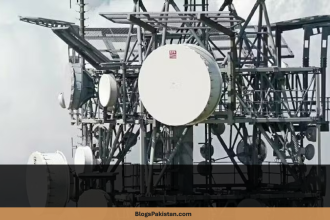In a move that’s shaking the tech world, Microsoft has announced it will lay off nearly 4% of its workforce. This decision comes as the tech giant grapples with the economic realities of investing heavily in Artificial Intelligence (AI) infrastructure. With major changes underway, let’s dive into the factors leading to these layoffs and what they mean for the future of tech giants like Microsoft.
Why Layoffs, Microsoft?
Microsoft, known for its pioneering software solutions and vast technological innovations, is recalibrating its workforce. The company revealed that approximately 9,000 employees will be affected, adding to the 6,000 job cuts announced back in May. These layoffs are not just numbers; they are carefully calculated steps taken by Microsoft to manage the soaring costs associated with scaling AI infrastructure.
The company, which boasted roughly 228,000 employees worldwide as of June 2024, is reining in costs amidst hefty investments. Microsoft had pledged a whopping $80 billion in capital spending for its fiscal year 2025. However, the financial burden of expanding its AI capabilities has pressured its margins, with its cloud margin for the June quarter expected to shrink compared to last year.
Streamlining for the Future
But it’s not all doom and gloom. Microsoft has a strategic plan in place. The company aims to reduce organizational layers by having fewer managers, thereby streamlining products, procedures, and roles. This restructuring is intended to enhance efficiency and agility, making Microsoft a leaner, more competitive entity in the fast-evolving tech landscape.
The Seattle Times broke the news of these layoffs earlier, highlighting the company’s intent to optimize its operations. Meanwhile, Bloomberg News reported that the King division in Barcelona, known for the addictive Candy Crush video game, is slashing 10% of its staff, impacting around 200 jobs. Microsoft confirmed that its gaming division is part of the layoffs, although it did not affect the majority of the unit.
A Trend Among Tech Titans
Microsoft is not alone on this rocky road. Other tech giants investing heavily in AI are also trimming their workforce. Meta, the parent company of Facebook, announced plans to cut about 5% of its “lowest performers.” Google, under Alphabet, has laid off hundreds of employees in the past year, while Amazon is also streamlining operations across various segments.
These layoffs reflect a broader trend in Corporate America, where economic uncertainties and rising costs are prompting companies to tighten their belts. As businesses race to streamline operations and hedge against future cost pressures, the focus is on efficiency and sustainability.
The AI Investment Dilemma
The tech industry is undergoing a seismic shift, with Artificial Intelligence at the heart of this transformation. Companies are investing billions in AI infrastructure to stay ahead of the curve. However, these investments don’t come cheap, and the financial strain is evident. While AI promises unprecedented advancements in technology and business operations, the immediate costs are significant.
For Microsoft, the challenge lies in balancing its ambitious AI projects with fiscal prudence. The company’s commitment to AI development is steadfast, yet it must navigate the complexities of maintaining profitability and shareholder confidence.
Looking Ahead: Opportunities and Challenges
As Microsoft and other tech giants forge ahead with AI integration, they face a dual challenge. On one hand, they must continue investing in cutting-edge technologies that promise transformative benefits. On the other, they must manage expenses and ensure that their business models are sustainable in the long term.
The recent layoffs, while difficult, are a strategic move to position Microsoft for future success. By streamlining operations and focusing on core competencies, the company aims to enhance its competitive edge in the global tech arena.
The tech landscape is evolving rapidly, and adaptability is key. As Microsoft recalibrates its workforce, it remains committed to driving innovation and delivering value to its customers. The journey ahead promises both opportunities and challenges, but with strategic foresight, Microsoft is poised to thrive in the AI-driven future.
Conclusion: Navigating the Future with Resilience
Microsoft’s decision to lay off a portion of its workforce is a reflection of the broader challenges facing the tech industry. As companies grapple with the economic realities of AI investments, strategic adjustments are necessary to ensure long-term viability. The road ahead is complex, yet filled with promise.
As Microsoft navigates this transformative phase, its resilience and adaptability will be crucial. By aligning its operations with emerging technological trends, the company is well-positioned to lead in the era of AI. The future is bright, and with strategic vision, Microsoft will continue to be a pioneer in the tech world.










